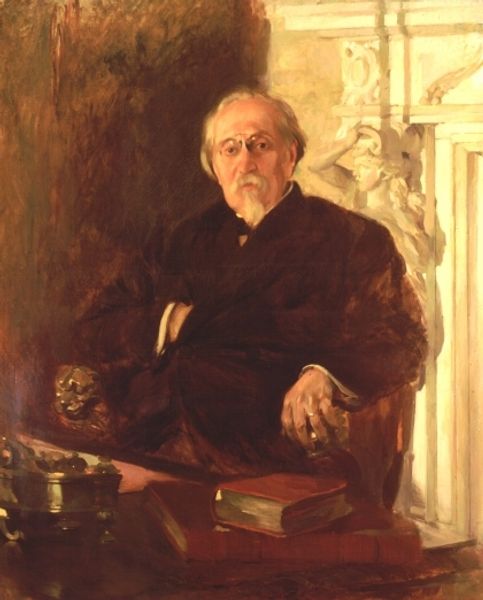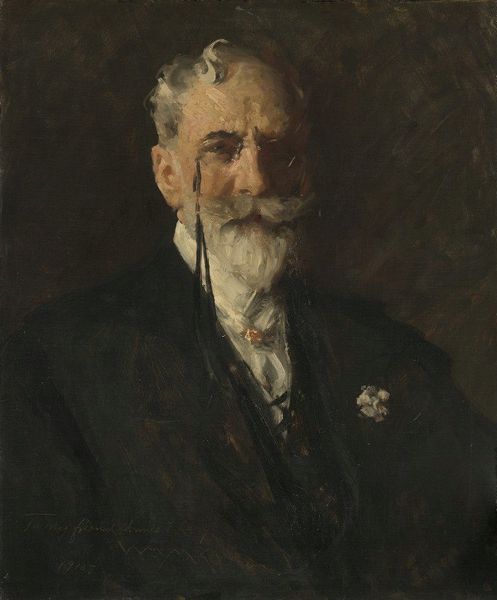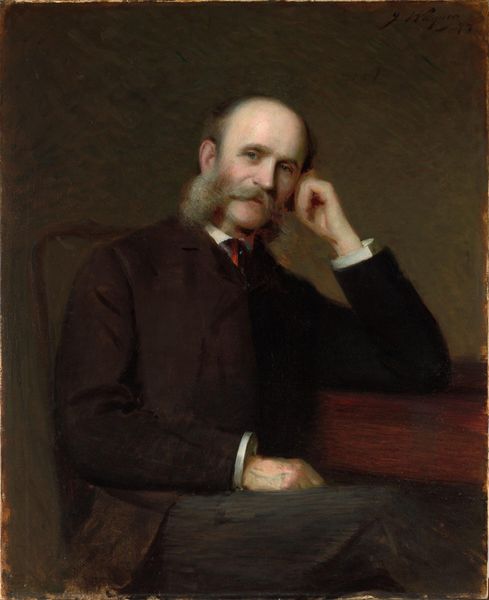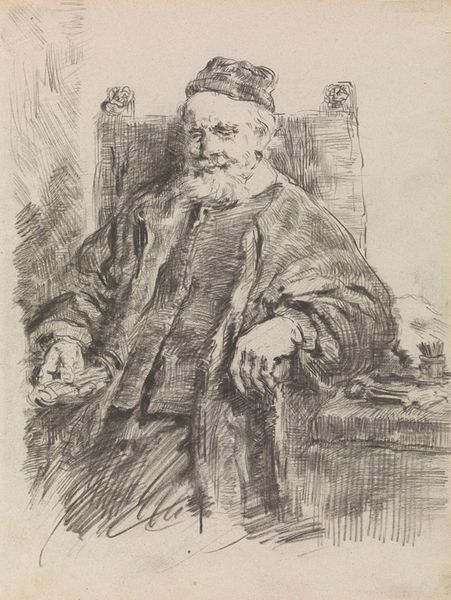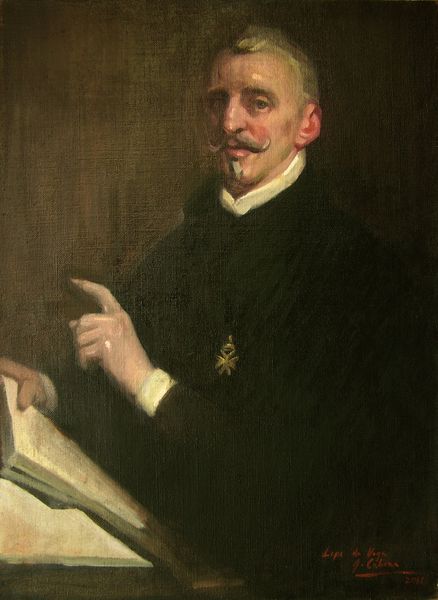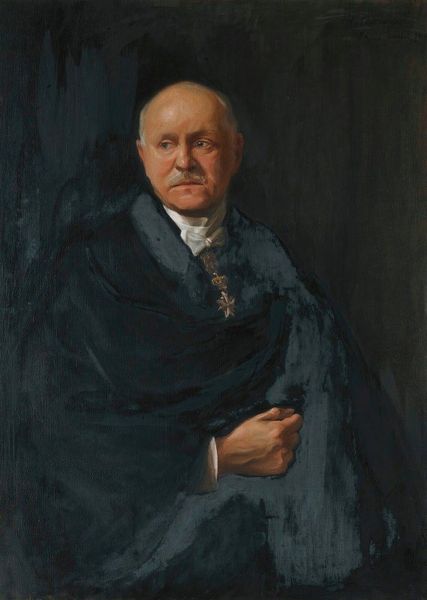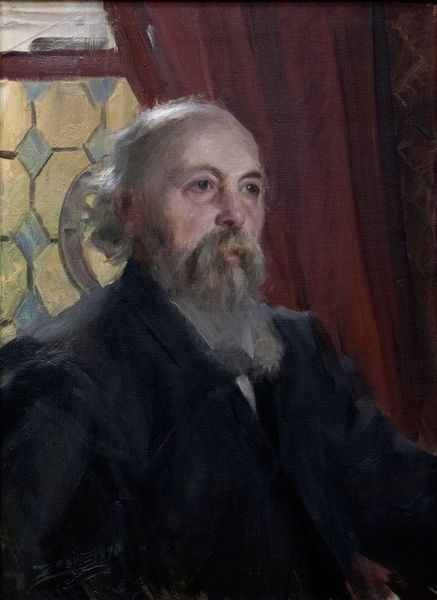
Copyright: Public Domain: Artvee
Editor: This is Friedrich von Amerling’s 1875 oil portrait of Anton Ritter von Schmerling. It’s a very dark painting. The muted palette seems almost to flatten the image. How do you interpret the artist's choices here? Curator: Well, consider the construction of the gaze. Von Schmerling looks off into the distance, perhaps pondering, yet the planes of his face are brought forward through highlighting. The painterly brushstrokes render textures on the face but, also, on the vestments and within the trappings of his seat. Note how the light reflects, unifying form with dark tonality, within the picture frame. Editor: So you're seeing this as a formal study in light and shadow, rather than as a character study? The composition is interesting, with his figure off to the right. Curator: Precisely! Examine the tonal arrangement. The dark suit pushes against the dark background. We can discern various material textures of the man in contrast to his environment: cloth, flesh, and paper all vibrate based on surface features. There's a formal interplay, not mere mimesis. How do those elements work together to form a pictorial language? Editor: It seems less about personality and more about exploring painting itself, how color and texture define space and form. It's like Amerling uses the subject as an excuse to analyze visual components. Curator: An astute observation. It raises important questions about representation versus presentation. Von Schmerling, as an individual, becomes secondary to the act of pictorial construction. This leads us to deconstruct conventional notions about Romantic portraiture, does it not? Editor: Absolutely. Thinking about it purely in terms of color and light makes it much more modern. It changes how I understand not just this piece but the entire genre. Curator: Indeed. Hopefully, our dialogue encourages a new critical engagement with academic art of the era.
Comments
No comments
Be the first to comment and join the conversation on the ultimate creative platform.


